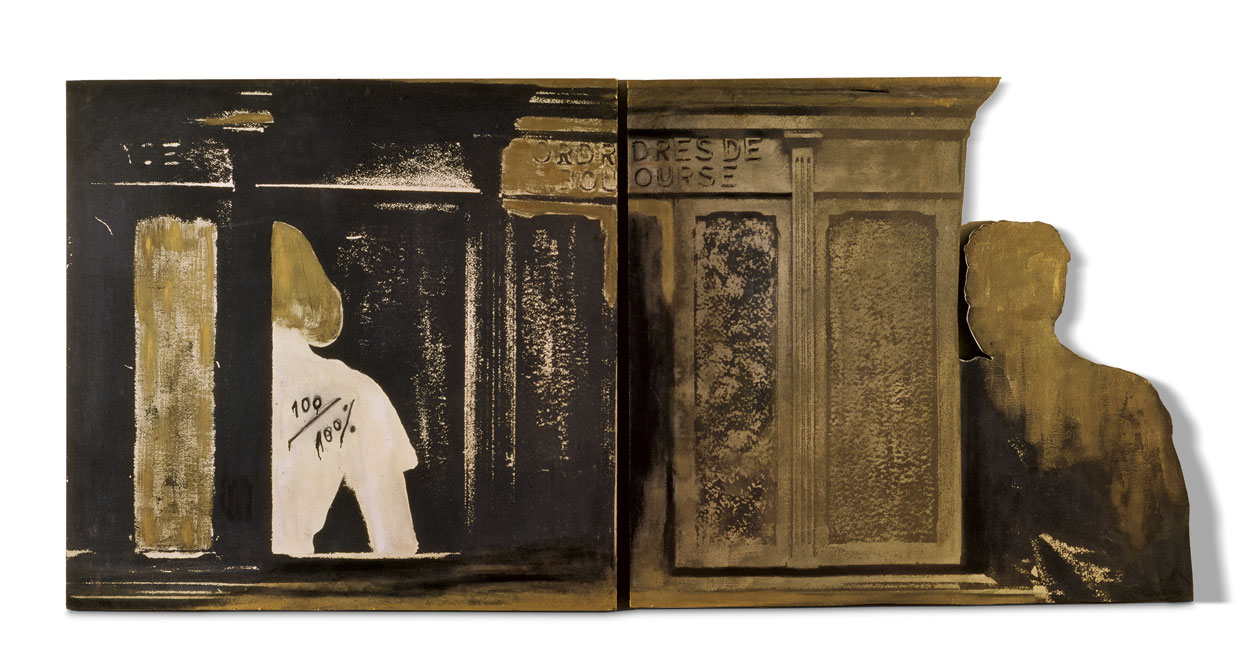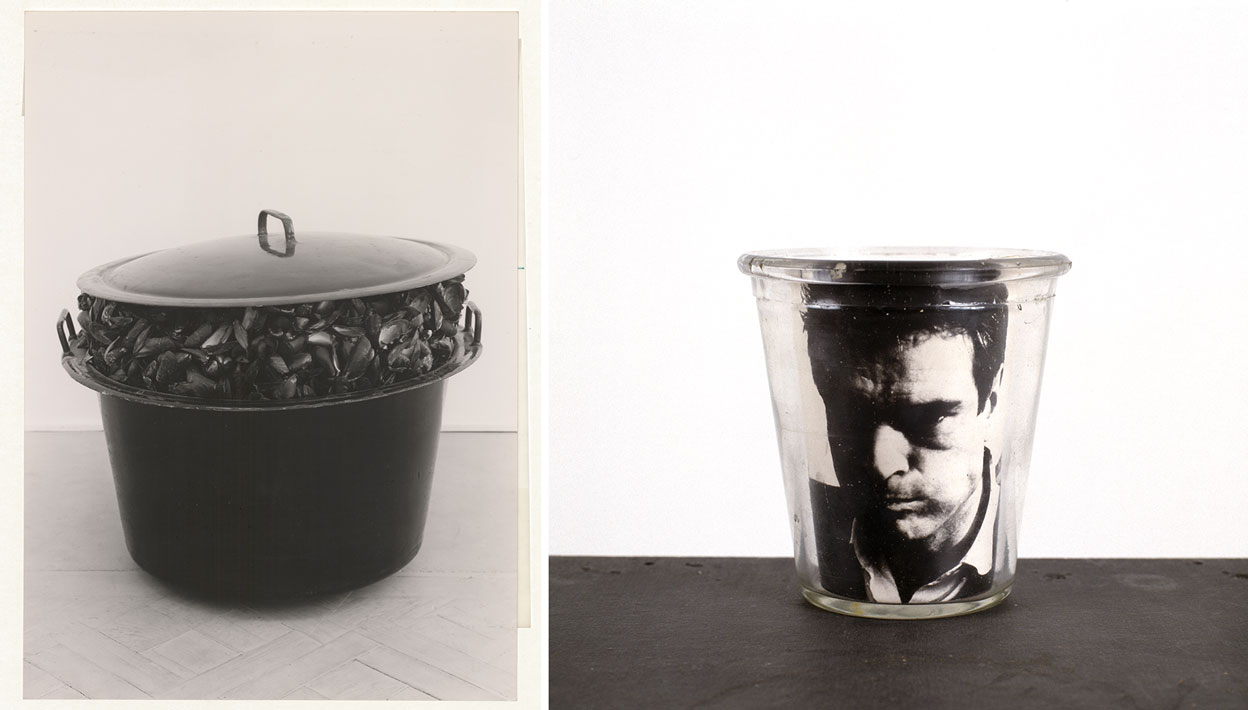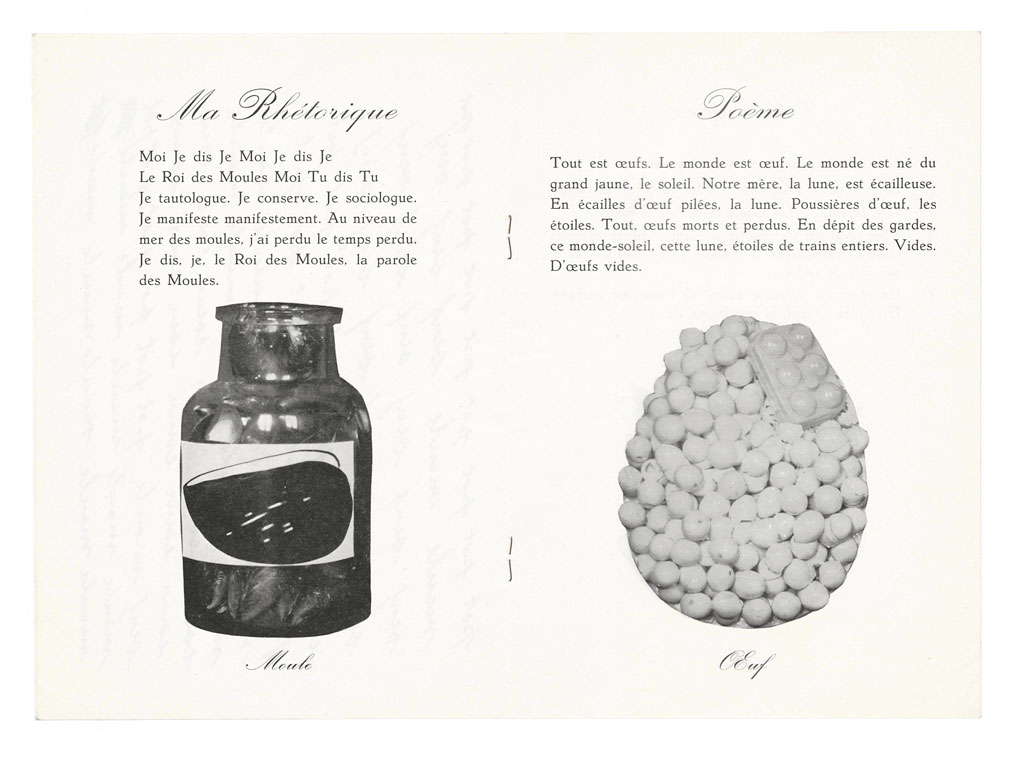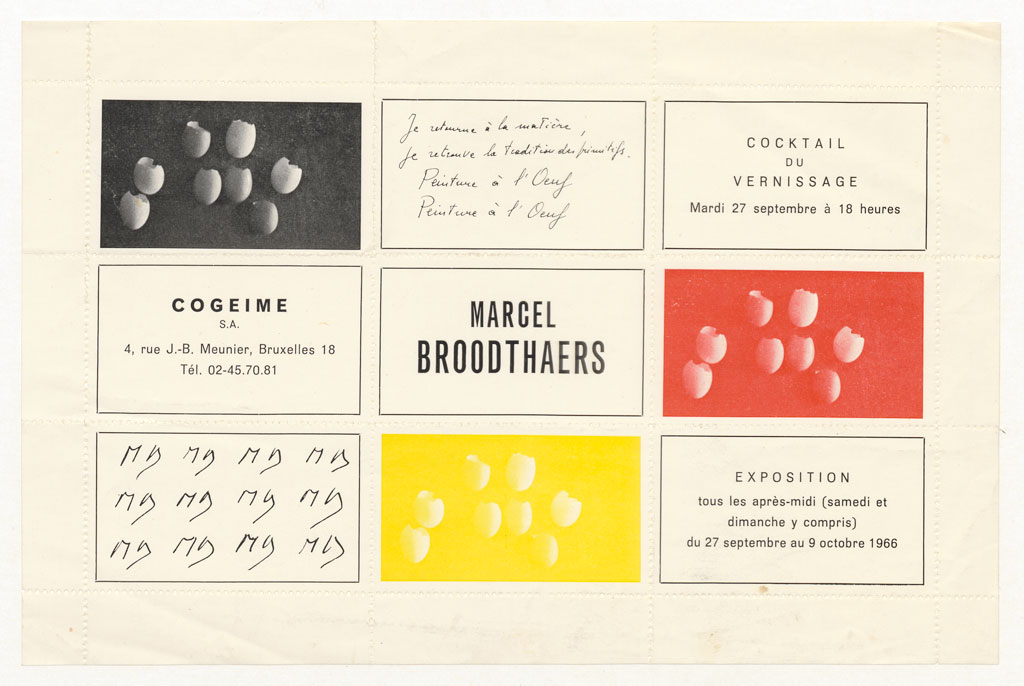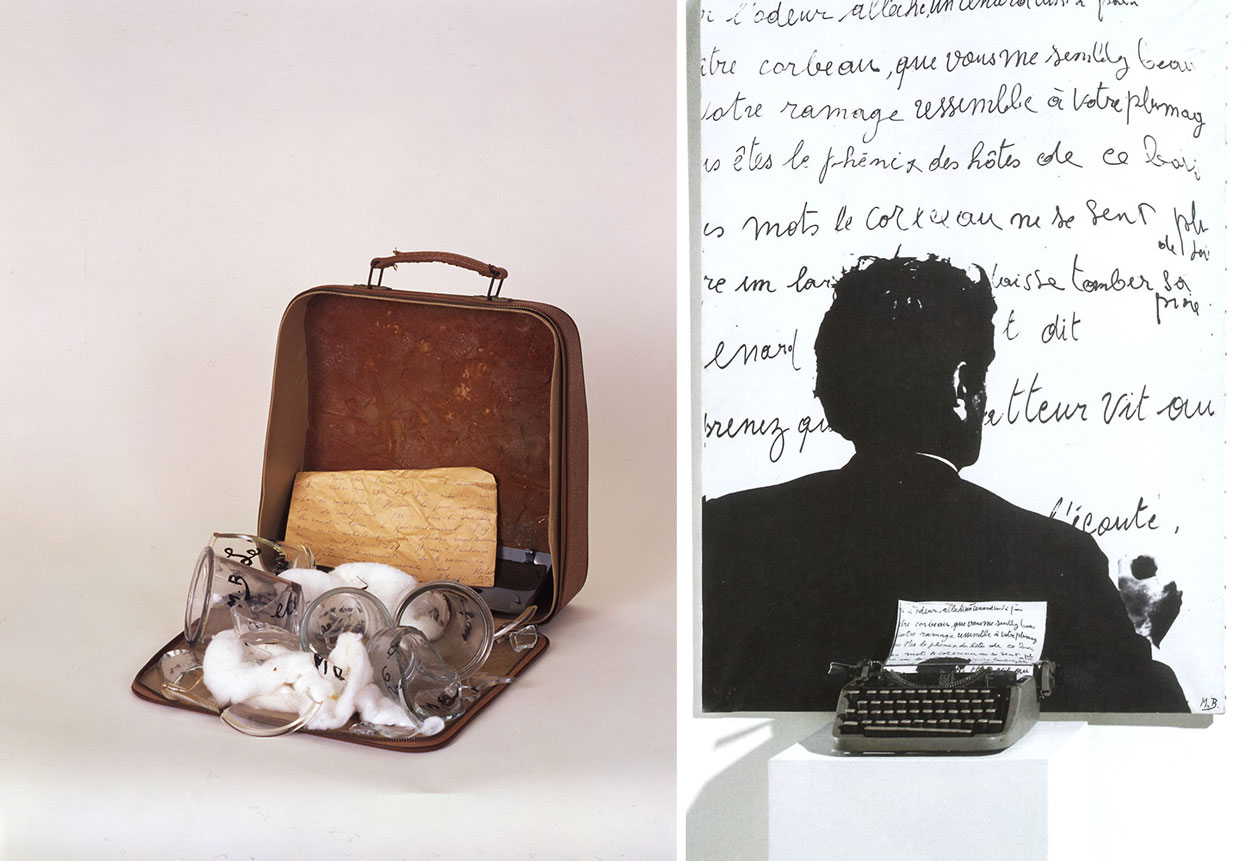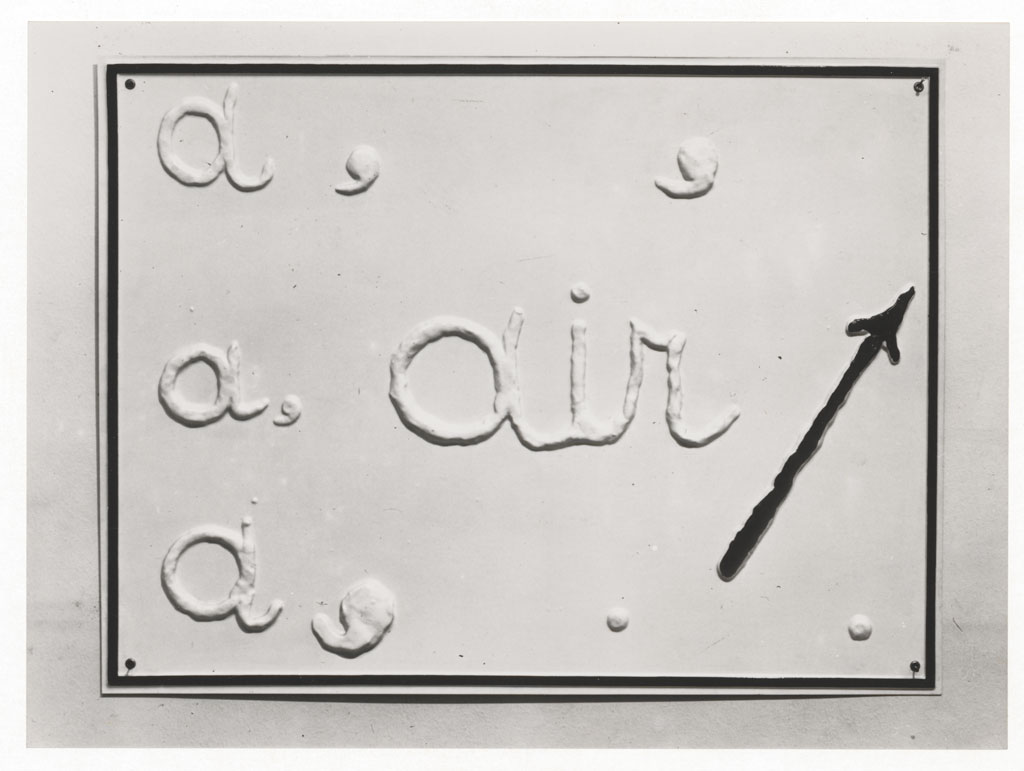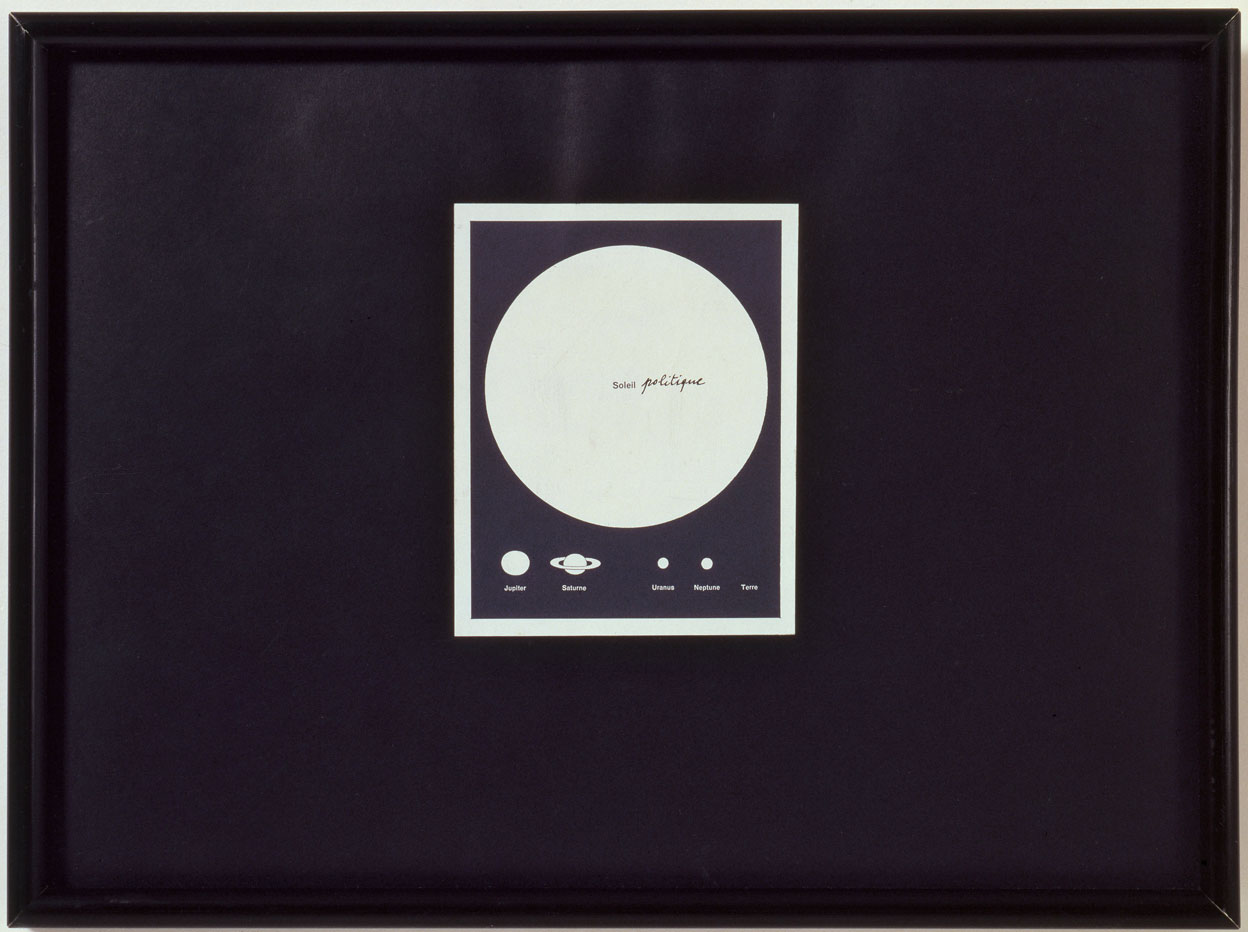ART-PRESENTATION: Marcel Broodthaers-Soleil Politique
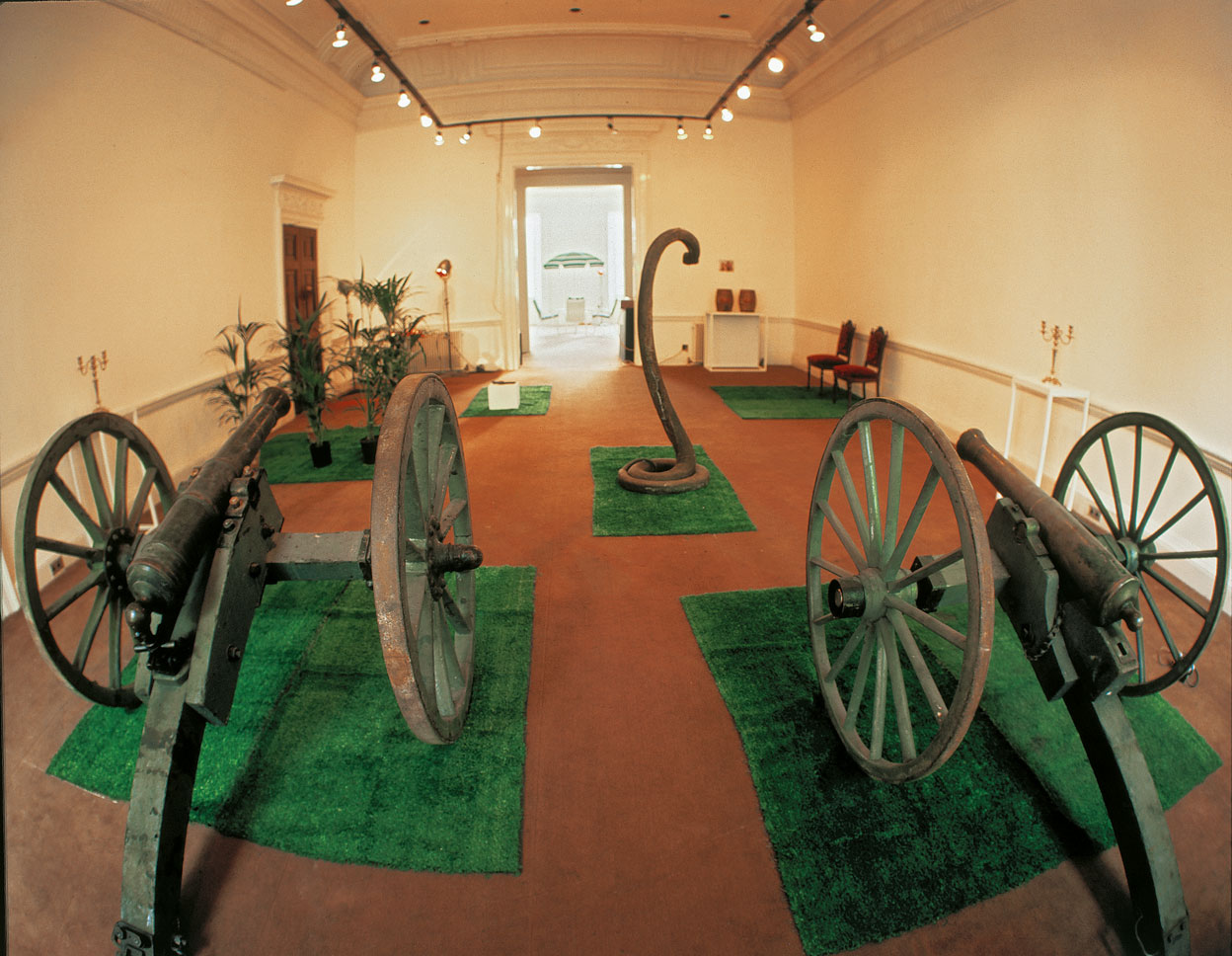 It is traditionally assumed that Marcel Broodthaers began his career as a visual artist at the end of 1963, when he put a stack of copies of his poetry collection “Pense-Bête” in plaster and made the following statement: “I too, have wondered whether I could not sell something and succeed in life…”. In response to new trends in the visual arts, Broodthaers begins to exhibit objects; mussels, fries, eggs, bricks, coal and glass jars. He uses the Pop Art vernacular and introduces local goods into the domain of the visual arts.
It is traditionally assumed that Marcel Broodthaers began his career as a visual artist at the end of 1963, when he put a stack of copies of his poetry collection “Pense-Bête” in plaster and made the following statement: “I too, have wondered whether I could not sell something and succeed in life…”. In response to new trends in the visual arts, Broodthaers begins to exhibit objects; mussels, fries, eggs, bricks, coal and glass jars. He uses the Pop Art vernacular and introduces local goods into the domain of the visual arts.
By Dimitris Lempesis
Photo: M HKA-Museum Archive
The exhibition “Soleil Politique” is the first retrospective of Marcel Broodthaers in his own country for a decade. The exhibition focusses on Marcel Broodthaers from an Antwerp perspective, linked to Wide White Space Gallery. The exhibition aims to provide a comprehensive overview of the breadth of themes, media and presentation strategies Broodthaers engaged with. The title of the exhibition is taken from the diptych “Soleil Politique et fig.1 fig.2 fig.12 fig.0 fig.A”, a work by Marcel Broodthaers, made in 1972 using an illustration cropped from an encyclopedia, in which the artist has altered the illustration depicting the relative size of the planets in the Solar System. In adding the word “politique” to the largest sphere depicting the Sun, Broodthaers praises the Sun’s emancipatory force and, at the same time, reveals the hegemonic character of a power that demands obedience. In completing the work by altering the smallest circle, depicting the Earth, he places his discourse in space and affirms a consciousness of its finitude. In merging planet Earth with the darkness of the universe, as rendered by the page’s black background, the former director of the Musée d’Art Moderne, Départment des Aigles (Museum of Modern Art, Department of Eagles) brings to light the risk of a return to obscurantism. With the stroke of a pen, Broodthaers eclipses the entire planet with ink, and thus points to the somber threat that an identity oblivious to its incompleteness and insufficiency poses. The exhibition approaches Broodthaers’ oeuvre from the idea that art is always political, and that politics are tantamount to constant negotiation without ever reaching a final conclusion. This approach to complexity is initiated when, in around 1967, Broodthaers allows this concept to affect his visual work and presents words or text in different contexts. His first exhibition in which words, objects and various forms of printing are brought together in an ensemble was “Le Corbeau et le Renard” (1968). It was presented at the Wide White Space Gallery, where he organised a number of important exhibitions from 1966 to 1974. The exhibition presents for the first time in Netherlands “Decor: A conquest by Marcel Broodthaers’ (1975), a loan from the V – A – C Foundation in Moscow. Broodthaers created “Décor: A Conquest” for the 1975 inauguration of London’s Institute of Contemporary Art six months before his death. His stated theme of Décor is the “relationship between war and comfort.” Décor contains no works made by Broodthaers, only objects bought or borrowed. In its two period rooms, representing the 19th and 20th Centuries, Broodthaers staged encounters with weapons and furniture. In “Salle XIXe Siècle” he evokes 19th Century Imperialism through spot lit objects isolated on rugs of artificial grass (Edwardian chairs, Napoleonic chandeliers, a huge stuffed striking python, Waterloo-era cannons, old revolvers, a lobster playing cards with a crab on a card table, potted palms, and a flower ball mimicking a cannonball). The “Salle XXe Siècle” contains modern weapons (revolvers, a hand grenade, machine guns, and operating manuals), displayed among contemporary garden furniture (a patio table, chairs, and a fringed umbrella). On the table is an uncompleted jigsaw puzzle depicting the Battle of Waterloo, after a print by William Heath. Décor (the French translation is both theatre and film-set) was the backdrop for his film, The Battle of Waterloo, made during his ICA exhibition. The film consists of intercut interior views of Décor, and exterior shots of the annual Trooping the Colour ceremony for the Queen’s birthday that passes in front of the ICA. “Bateau Tableau” (1973) originates from a 19th Century amateur naval painting purchased in a curio shop in Paris. Projecting details of the painting via slides, Broodthaers relates his imagined narrative of the painting. Playing on the words “bateau” (boat) and “tableau” (painting) the painting becomes the subject of the work.
Info: Curatorial Team: Lotte Beckwé, Bart De Baere, Liliane Dewachter, Maria Gilissen-Broodthaers and Marie-Puck Broodthaers, M HKA-Museum of Contemporary Art Antwerp, Leuvenstraat 32, Antwerp, Duration: 4/10/19-19/1/20, Days & hours: Tue-Wed & Fri-Sun 11:00-18:00, Thu 11:00-21:00, www.muhka.be
